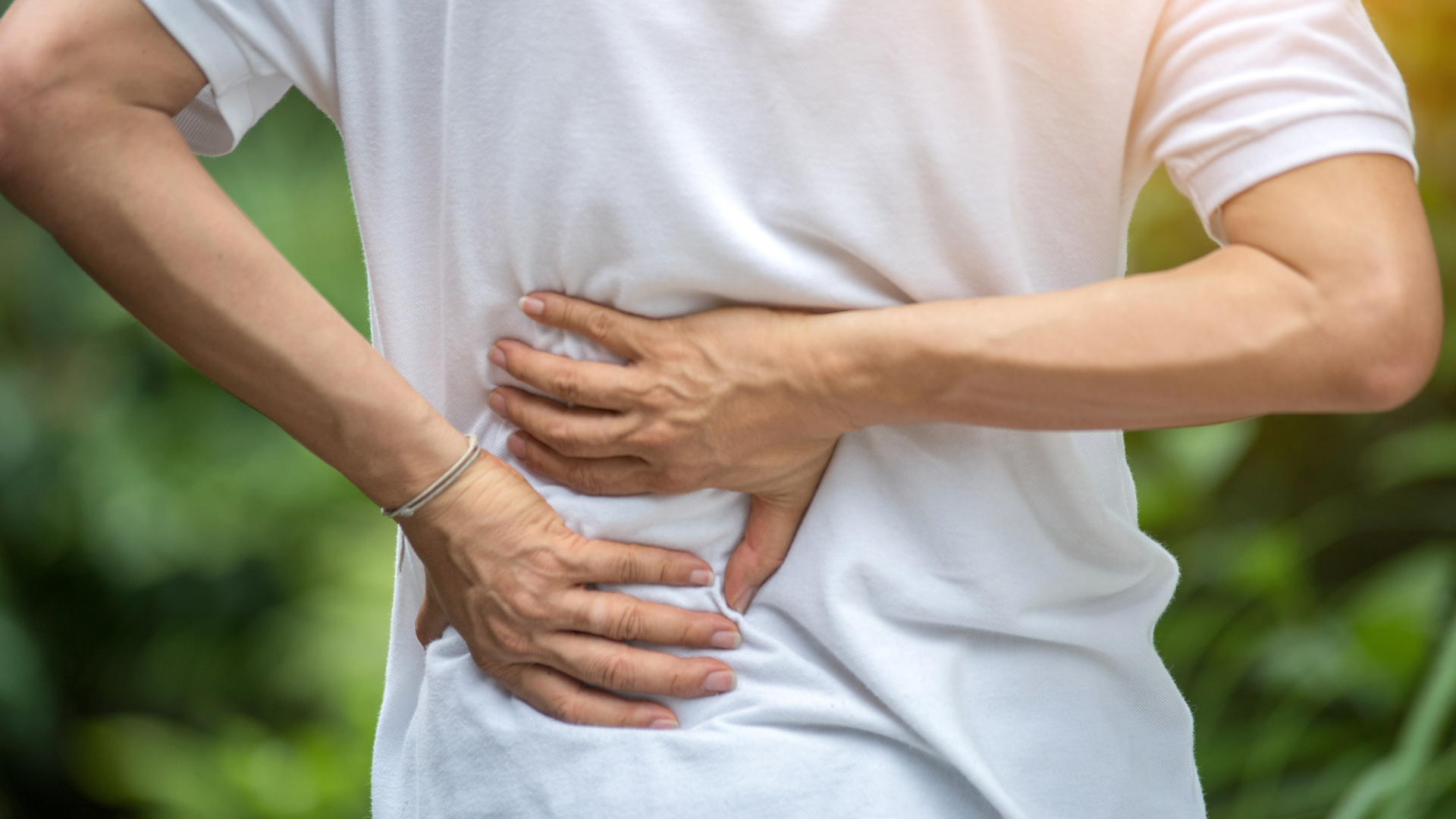Muscle knots: what are they, and how can you treat them?
We get under the skin of muscle knots and ask the experts for pain relief tips

Many of us will be all too familiar with muscle knots. They’re essentially sore spots that form when bands of muscle become tight and sensitive. You may experience pain all the time or only when you touch the knot. If you sit hunched at a desk most of the day or tend to overdo your training then you’ll be more prone to muscle knots.
The good news is there are ways to alleviate tight muscle knots. Stretching, gentle movement and massage can all provide pain relief. The best massage guns are a convenient way to encourage your muscles to relax without needing to leave the house too. Better still, there are simple steps you can take to reduce the risk of muscle knots developing in the first place.
While muscle knots are common, it can be tricky to navigate all of the information out there, especially since scientific understanding is still evolving. We’ll ask the experts to walk you through what causes muscle knots. Keep reading for simple tips for pain relief and learn how to prevent muscle knots from occurring in the first place.
If you want to help treat your muscle knots at home, take a look at our buying guide for the best massage guns to see if a massage gun might be right for you.
What are muscle knots and what causes them?
So what exactly are muscle knots? “A muscle knot is a common term used to describe a hyper-irritable spot within a muscle,” explains Abi Smith, Rehabilitation Physiotherapist at Six Physio Chelsea and Mansion House. “Although you can experience muscle pain in one tender spot, muscles do not develop knots.”
Knots, or myofascial trigger points, typically occur due to either muscle underuse or overuse. This causes tightness which in turn leads to pain.
Having a sedentary lifestyle can increase the chances of muscle knots, particularly if you slouch. “Muscles love movement,” says Smith, “If you sit at a desk for eight hours you might not think of it as strenuous, but it can be on certain muscles. This leads to those muscles becoming overloaded and painful.”
Get the world’s most fascinating discoveries delivered straight to your inbox.
Yet even if you move throughout the day and exercise regularly, you can still develop muscle knots. If you push yourself too hard or you’re repeatedly working the same muscles they can become overloaded and tight, according to the American Council on Exercise. You’ll want to strike a balance so you move and exercise regularly while ensuring you include sufficient recovery time.
“Knots can also form due to stress, poor posture or workstation set-up, or lack of sleep,” explains Sherry McAllister, Doctor of Chiropractic and President of the Foundation for Chiropractic Progress.
Regardless of your activity levels, it’s helpful to be aware of muscle knots and understand how to treat and prevent them.
How can you treat muscle knots?
Muscle knots can be a pain, but you’ll be pleased to know you can take simple steps to ease soreness. “Understand the root cause of why you're experiencing pain and fix that,” says Smith. “This gets and keeps you out of pain so you can get on with the important things in life.”
If inactivity is the culprit, you’ll want to prioritize regular movement throughout the day, whether that’s doing stretches from your desk or going for a brisk walk at lunch. If you suspect you’ve been overdoing it at the gym, allow your body to rest.

Looking for short to medium term relief? A trigger point massage is a great way to ease muscle knots. A study published in the International Scholarly Research Notices suggests that massage can relieve tension, although the experts don’t fully understand why. You may want to experiment with a DIY massage or you could treat yourself to a salon appointment. Other simple strategies to ease pain include drinking plenty of water and applying heat or ice to the area. If the pain persists, seek advice from a health professional.
Can you prevent muscle knots?
While you can’t entirely prevent muscle knots, you can take simple steps to reduce the risk of them occurring. “The best way to prevent and cure muscle soreness is movement,” says Smith. “Make simple changes such as getting up and moving every 20 minutes throughout the day. Exercise offers a whole host of benefits and is a brilliant way to relax your muscles.”

If you’re already a keen athlete and want to prevent muscle knots, you can make simple tweaks to your exercise routine. Mix up your schedule so you’re not targeting the same muscle groups on consecutive days. Don’t forget to prioritize time for rest and recovery too — overtraining can be counterproductive as it increases the risk of an injury that could put you out of action entirely.
Being mindful of your posture can also help. “Review your posture while sitting and sleeping to avoid tightening the muscle tissue,” says McAllister. “Spending long periods on your cell phone for instance with your head dropped forward and your upper back and neck stressed leads to the beginning of ‘overused’ or stressed muscle.”
Consider other factors that could cause muscle irritation. “Hydration and nutrition play an important role in a muscle’s ability to perform its duty,” adds McAllister. “Consider your water and vegetable intake and your stress levels. All of these play an important role in ensuring your body works well when you ask it to.”
While muscle knots can be a pain, there are options for pain relief. Prevention is better than cure, so building healthy habits like regular movement can help keep muscle knots at bay.
Louise Bond is a UK-based writer specializing in health and wellbeing. She has over eight years of experience in management within health and care and brings this passion and expertise to her writing. Louise has been published in The Guardian, Planet Mindful and Psychreg among others. She is at her happiest when she is out in nature, whether that’s on an invigorating hike or pottering in the garden.



